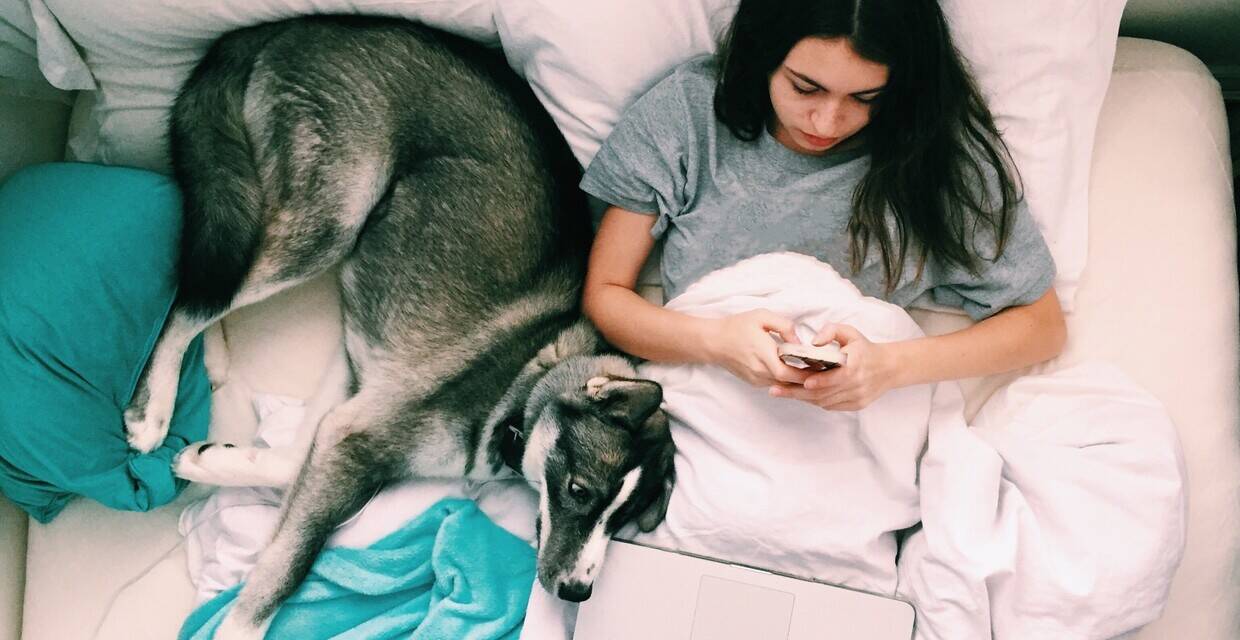Key Points
- The article explains the concepts of social distancing, quarantining, and isolation in the context of the COVID-19 pandemic. Social distancing involves maintaining a separation of at least six feet from others to prevent transmission, while quarantining is for those exposed to the virus and isolation is for those who have tested positive.
- It highlights the importance of preparing for extended periods at home, including stocking up on essentials and utilizing services like food delivery and streaming platforms. It also suggests ways to protect household members if one is infected, such as maintaining distance and disinfecting shared surfaces.
- The article emphasizes that even healthy individuals should practice social distancing to protect the broader public health, as their actions can significantly impact at-risk populations.
- If medical attention is needed, the article advises calling ahead before visiting a healthcare provider in person, or considering a virtual visit to minimize transmission risk.
This post has been medically reviewed by Rob Rohatsch, MD, Medical Advisor to Solv Health.
As many Americans are now working from home and many schools across the country have either closed or gone entirely remote, it’s clear we’re shifting (at least temporarily) to a state of social distancing. These practices and protocols are being put into place to intervene in the spread of coronavirus (COVID-19) across the country and the CDC is now recommending that any gathering of more than 50 people to stop for the next eight weeks and President Trump has asked Americans to limit any gathering to 10 people.
But what is social distancing and what’s the difference between social distancing, quarantining and isolation? We’ve given you the run down and tips for preparing and staying sane while you’re hanging at home for the foreseeable future.
So, what is social distancing?
Keeping your (literal) distance from others in your community is one of the most effective ways to reduce overall transmission of coronavirus across the population. Whether that be the person next to you at the gym, your co-worker or even the person you walked past on the sidewalk en route to the grocery, maintaining a separation of at least six feet from anyone around you is your first step in preventing further transmission.
Several communities across the country have also begun to implement a variety of practices from shelter in place in California to mandatory closing of bars and restaurants in several other states – so to find the latest on what’s happening in your city and make sure you’re prepared, check your local or state health department.
What is quarantining?
Quarantine is different from social distancing in that it is for people who have been exposed to the disease and may fall sick as a result. When this happens, the individual or group is required to stay in one place. For example, several cruise ships have gone into quarantine as passengers on the ships have tested positive for coronavirus during the first several weeks of March 2020.
Similarly, some individuals are practicing self-quarantining. This is a best practice for individuals even if they do not think they've been exposed, but want to stay home to reduce the risk of getting sick or spreading the virus to others.
What is isolation?
Isolation happens when an individual receives a positive diagnosis of coronavirus (COVID-19). This could mean isolation at home or in the hospital depending on the severity of the case. In cases of isolation, any individuals interacting with the patient will also need to take additional precautions to avoid contracting coronavirus.
How can I prepare for potentially long stretches at home?
Being at home all day is no easy feat, especially if your entire family is also around.
It’s important to make sure the house is adequately stocked since you’ll likely be spending more time at home over these next few weeks and months. Making sure you have enough food and paper goods is a good first step, but also ensuring you have an adequate supply of any daily meditations, first aid kits and cleaning supplies are great practices to keep you and your family safe and healthy.
There’s also plenty of services that have developed as part of the on-demand economy that can make your time at home a little bit easier. Many major cities offer food and grocery delivery through Peapod, Instacart, Amazon, etc. Thankfully all of the streaming services (Netflix, Disney+, Hulu, etc.) are putting out new content every week so you can find something for everyone to watch. Disney+ even announced they’re releasing Frozen 2 three months early and several streaming services have released all of the 2020 Oscar nominated films–find a silver lining by catching up on all of the movies and tv you’ve been putting off.
If I’m sick, how can I protect those at home with me?
If you suspect you have coronavirus or have tested positive, you should try to keep as much distance as possible from anyone else who might be at home with you. Ideally, this means not sharing a bedroom or bathroom and avoiding any common space areas, but if you’re in a smaller space sometimes this can be challenging. In those instances, doing everything you can to disinfectant any shared surfaces such as counters, tabletops, doorknobs, bathroom fixtures, toilets, phones, keyboards, tablets, and bedside tables per the CDC’s guidelines, will best position you to reduce any transmission. And of course, washing your hands frequently is the gold standard when trying to prevent infecting those around you.
If I feel healthy do I still need to practice social distancing?
Social distancing is the best tool at our disposal to protect the broader public health. While your individual risk might be low, it’s important to think about how those small actions of social distancing can benefit the population. For example, 80% of the people who contract coronavirus have mild symptoms, however if one of those individuals passes it on to a more at-risk individual it has the potential to lead to a much worse infection. And that one infection can lead to a trickle down effect–if some of those infected individuals end up in the hospital it means it’s harder for other sick populations (newborns, cancer patients, etc.) to get adequate care.
Moral of the story–practicing social distancing is for the greater good, even if it doesn’t impact you directly.
What should I do if I need to see a doctor?
If you need to see a provider and are planning to go in person, call ahead before visiting. Especially if you’re concerned that you may have coronavirus, your healthcare provider can take the best steps to get you tested and get you the right care while also avoiding getting additional people in the office infected or exposed to coronavirus.
Another alternative to in-person care that allows you to practice social distancing is to have a virtual visit with your provider. While providers can’t test you for coronavirus virtually they can evaluate whether or not you need to be tested and then direct you to the appropriate next steps based on their evaluation while minimizing transmission of coronavirus.
Frequently asked questions
What is social distancing and why is it important?
Social distancing involves keeping a physical distance from others in your community to reduce the overall transmission of coronavirus. This includes maintaining a separation of at least six feet from anyone around you, which is a crucial step in preventing further transmission of the virus.How does quarantining differ from social distancing?
Quarantining is specifically for people who have been exposed to the disease and may fall sick as a result. These individuals or groups are required to stay in one place, such as their home, to reduce the risk of spreading the virus to others.What does isolation mean in the context of COVID-19?
Isolation occurs when an individual receives a positive diagnosis of coronavirus. This could mean isolation at home or in the hospital, depending on the severity of the case. In cases of isolation, anyone interacting with the patient will need to take additional precautions to avoid contracting the virus.How can I prepare for extended periods at home due to social distancing or quarantining?
It's important to ensure your home is adequately stocked with essentials such as food, paper goods, daily medications, first aid kits, and cleaning supplies. You can also take advantage of services like food and grocery delivery, and use streaming services for entertainment.How can I protect others at home if I'm sick with coronavirus?
If you suspect you have coronavirus or have tested positive, you should try to keep as much distance as possible from anyone else at home. This includes not sharing a bedroom or bathroom, avoiding common areas, disinfecting shared surfaces, and washing your hands frequently.Should I practice social distancing even if I feel healthy?
Yes, social distancing is a crucial tool to protect the broader public health. Even if your individual risk might be low, practicing social distancing can prevent the spread of the virus to more at-risk individuals, which can help prevent strain on healthcare resources.What should I do if I need to see a doctor during this period?
If you need to see a healthcare provider, you should call ahead before visiting in person, especially if you suspect you may have coronavirus. Alternatively, you can have a virtual visit with your provider, who can evaluate whether or not you need to be tested and direct you to the appropriate next steps.











